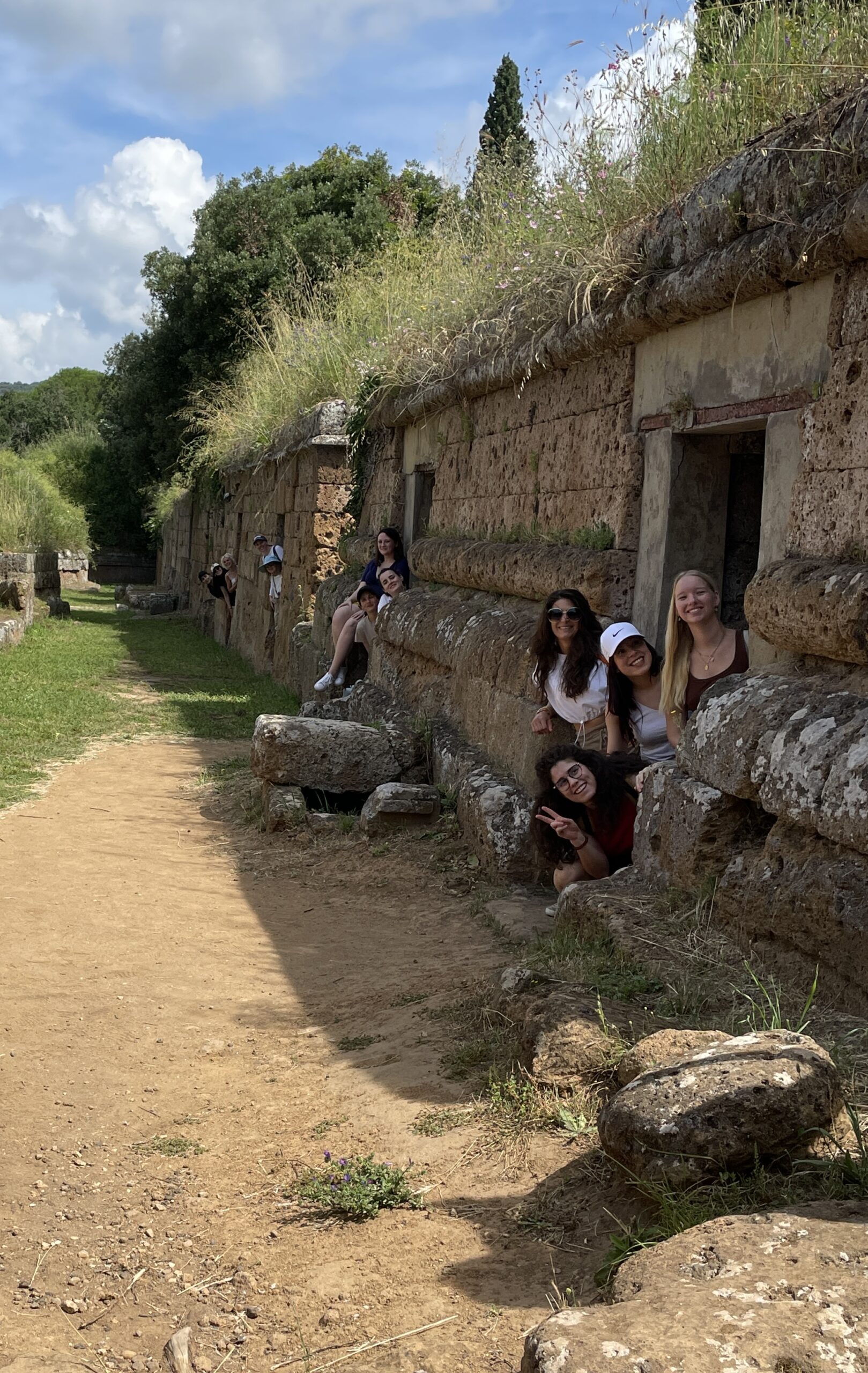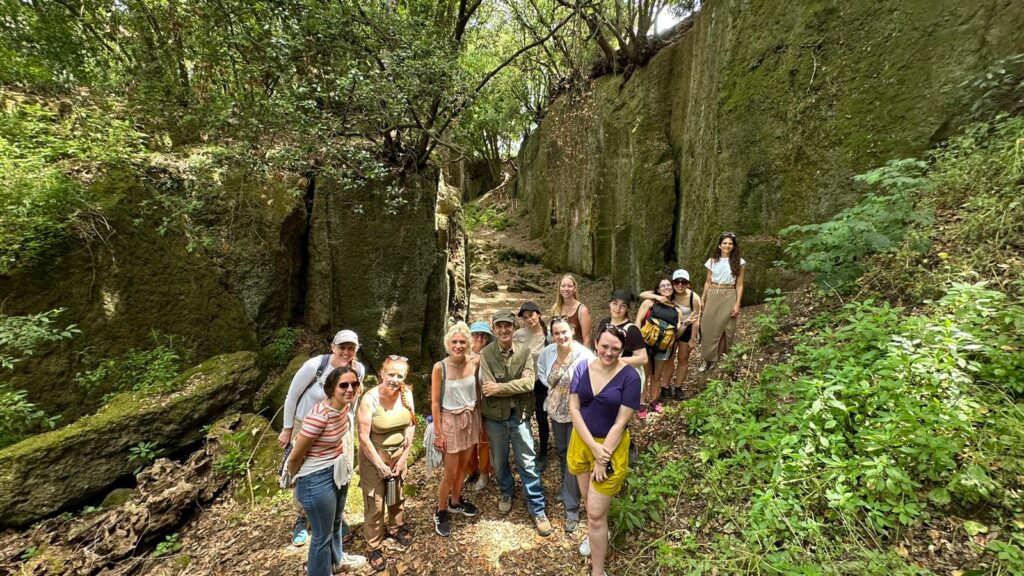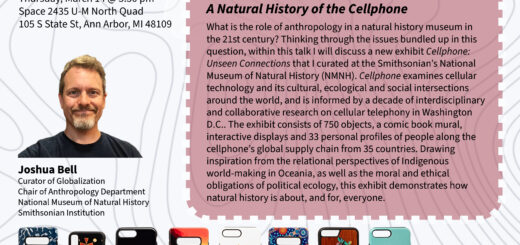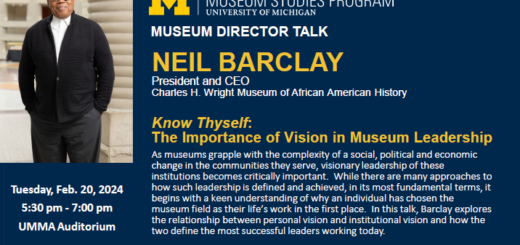Emily Finch — “The Impressions and Importance of Interdisciplinary Museum Studies: Investigating the Intersection of Law, Information, and Ethics”

I am genuinely awestruck and excited by the cool metallic shelves, faintly buzzing lights, sight of sterile and ordered archival boxes, and the faint musky and woody smell of documents in an archive. However, the warmth of the sun, feeling of walking on winding uneven cobblestone streets, brushing up against the medieval buildings to avoid the apes speeding by, and smelling the earthy scent of the Umbrian countryside was a welcome change of setting for my Museum Studies Program (MSP) practicum. As much as the change in scenery was a happy perk, the real beauty and lifelong memories from my practicum experience came in the form of the connections made and knowledge refined through the Association for Research into Crimes Against Art (ARCA)’s Postgraduate Certificate in Art Crime and Cultural Heritage.
As an information professional, currently enrolled in law school, when I looked at what practicum experiences would impart the greatest lessons, help me cultivate the greatest skills, and enable me to give the most back to the profession, I was frustrated and torn between choosing opportunities that would have been exclusively on the legal side of museum work or on the archival and information side. As a scholar first and foremost interested in the intersections of law, ethics, and cultural heritage, and seeking a career to mirror that, the opportunity to participate in the ARCA program, which covered an array of themes taught by academics, archaeologists, art historians, criminal investigators, insurance advisors, and security specialists, became the clear solution and exactly what I was looking for. Outside of the breadth of topics and instructors, the program brings together an international cohort of participants (lawyers, academics, government officials, museum practitioners, investigators, and professionals engaged actively in the art market) through its annual conference. While the ARCA program did not require me to put into practice the theories I mastered in the Museum Studies Program in a traditional/internship manner, it served as a petri dish that allowed my knowledge to grow, culture, and evolve and offered me a viewpoint from which to observe how the lessons and my experiences (post-MSP proseminars) have and continue to change me.
This fall, as I wrapped up a capstone paper on the reasons Congress should renew the Holocaust Expropriated Art Recovery Act, I realized I was not just completing the final requirements to complete my practicum experience, but I was also effectively drawing to a close the formal part of my Museum Studies Program journey. My capstone paper, focused on law and ethics, and advised by a leading cultural heritage law scholar, mirrored the MSP electives I took through the School of Information (courses on evaluating accessioning and deaccessioning practices to meet community needs through collections management and how institutions document and store provenance, rights, and standardized data for internal and external access) and both narrowed and united my focus on the intersectional information needs of museums, libraries, and archives. Left to think about why the Museum Studies Program and ARCA stand out so significantly in my educational journey, I realized that part of the appeal of the ARCA program was that it mirrored the elements of the MSP so strongly. Each program featured aspects that were tailored to individual interest and expertise, site visits that encouraged students to engage with theory in practice, and most importantly, both programs were made special by their intentional interdisciplinary nature.
The Museum Studies Program took me from a museum aficionado and transformed me into a critical thinker through thoughtful instruction, site visits, programming by the MSP community, and especially through my peers in the 2018-2019 cohort. Frequently found next to my close friend and fellow MSI candidate Tori Scheppele (née Cox), I feel fortunate I always had the opportunity to bounce metadata and collection ideas off someone outside the walls of the North Quad. However, I would not have had the have same opportunities to reflect on the educational, outreach, research, and scientific work done by museums, or process the international and historical issues in museums without my peers from education, history, women and gender studies, German literature and language, Japanese, biological anthropology, art, and astronomy and astrophysics graduate programs. My MSP cohort brought me out of the “stacks” and my comfort zone, and challenged the way I saw the museum profession, myself as a museum patron, and museums as an institution. The magic of the proseminar setting was that while we all read the same material, we discussed it and responded to it as informed by our unique areas of focus and experiences; this not only led to a greater appreciation and understanding of the theories explored, but also made the lessons resonate beyond the classroom and endure in my memory.
Already I can tell the same will hold true reflecting back on the ARCA program. Learning alongside art historians and provenance specialists educated across Europe, attorneys from Canada and Switzerland, a financial investigator from England, a forensic chemist from Portugal, a heritage and policy professional from Belgium, a designer and marketing professional from New Zealand, a papyrologist and art historian who has lived and worked across the world, and a customs professional from Ukraine, opened my eyes to the many meanings that fall under the umbrella of “heritage” and “heritage professional.” The experience made me feel less alone in my quest not only to seek out interdisciplinary educational opportunities, but to pursue an interdisciplinary career.
One of the most transformative portions of the ARCA program was our trip to Necropolis Banditaccia, a UNESCO Heritage Site and one of the largest (and most looted) Etruscan burial sites with tombs dating from the 9th century BCE to the later 3rd century BCE. This trip highlighted the need for engaged heritage professionals across the board to work to improve the ethical practice of the art and antiquities trade fueled by museums and independent collectors. Led by a forensic archeologist, this was my first opportunity to interact with an active excavation site with a documented historical fight against looting and illicitly trafficked cultural property. As a humanities nerd with a passion for ancient civilizations, I had a theoretical sadness and sense of awe when looking at Etruscan pottery and artifacts in museums. However, I can say with tremendous honesty that seeing the tombs in person, walking across the necropolis and pulling bits of pottery from the footpath, and interacting with a source country’s archaeological sites, not merely thinking about them in the abstract, dramatically changed me. This is especially true as an aspiring museum legal professional because 1) this visit was supplemented by a visit to the Archaeological Museum of Cerveteri, where the renowned Euphronios Krater was repatriated after the legality of the Metropolitan Museum of Art’s ownership of the krater was called into question, and 2) the forensic archaeologist was able coordinate access to a less-frequented portion of the museum featuring a wealth of repatriated items, some of which he himself played a role having returned.
While most of the tombs aren’t excavated or curated for entry—but no one necessarily stops you from trying—those that are made accessible with metal staircases and informational signs stand completely empty. At the tombs, visitors interact with limited labels which provide information on the age, the people entombed, and sometimes the excavation and what artifacts were once held inside. Upon physical entry, patrons are left to interact with the empty space and remaining stone architectural elements. Of the tombs curated for access, one has been more preserved; it is still void of human remains or artifacts, but it still features the tombs wall paintings as protected by glass, an audio tour explaining the paintings, and lighting that allows visitors to interact with the tomb and juxtapose what remains with what has been removed. For art historians and archaeologists perhaps, this experience may not be as revolutionary or exciting, but I shudder when I think that without my participation in the ARCA program, I could have someday started a career as a cultural heritage attorney (advocating for ethical loans, repatriation, and fighting against the illicit art trade) without being able to visualize, feel, and see for myself the losses. The loss of these artifacts is both material and contextual; looters are not archaeologists documenting where they pull objects from, and the removal of these objects strips them of their source, meaning, and any context they could provide under a more practiced, regulated, and legal excavation. Before the ARCA program, I could not have begun to imagine or understand the sense of victory or pride to see objects, like the Euphronios Krater, returned to its source community. This trip experience took place early in the program, and united by it individuals began building on it in different ways based on their individual experiences; in class peers returned to this underlying theme and this experience reflecting on it through the lens of their area of study especially when lessons most mirrored their background. This lead to discussions outside of class as the weeks and lessons began to build on each other and blend together and resulted in an opportunity to challenge and grow my understanding of issues outside the formal coursework. On weekend trips, over meals, and between classes I talked to and learned from my peers. The art, marketing, and design specialist and I talked about issues with forgeries, pastiche, and intellectual property. The papyrologist/art historian and I talked about preservation issues, cataloging, and the rate of theft in libraries and archives. The art historians and I talked about provenance, access to museum archives, and the usability design of databases. The lawyers and I talked about the nuances of civil and common law treatments of property, international attitudes around repatriation, and how to build careers as cultural heritage lawyers. The financial investigator, customs specialist, and I talked about tracking and prosecuting illicit art trafficking rings. The forensic chemist and I bonded over the use of chemical analysis as evidence in forgery cases. In each of these instances, and so many more, my peers and I were able to use our area of interest to add to the others’ understanding and expand on possible solutions while both starting at the same issue.
A recurring theme in the MSP coursework was the emerging trend that the issues facing museums are no longer siloed and the legal, ethical, and public service needs of the institution transcend individual job roles. These needs require feedback and action from the executive level down to volunteer docents. The ARCA program, again paralleling my MSP experience expanding on this theme, also centered on a transcending proposition: no matter where one is in the stream of professions dealing with cultural or heritage materials, ethical practices and the safeguarding of cultural heritage is of paramount importance. This safeguarding requires collective, cross-sectional work without which, the legacy of damaging past practices and incentives for ongoing illicit practices will not cease and as a result culture, connections, and context will be lost. Participating in the ARCA program was truly the perfect capstone to my Museum Studies Program experience. While my “active participant status” in each program has now come to a close, I could not be more grateful for the lessons, connections, and growth provided by these two programs. I am tremendously proud and grateful to call myself an alumni of the Museum Studies Program and ARCA Postgraduate Certificate Program, and I look forward to staying in touch and finding out how I can give back and continue to support both of these programs and their important efforts towards optimal and ethical museums and a more ethical art trade as I build my career.



